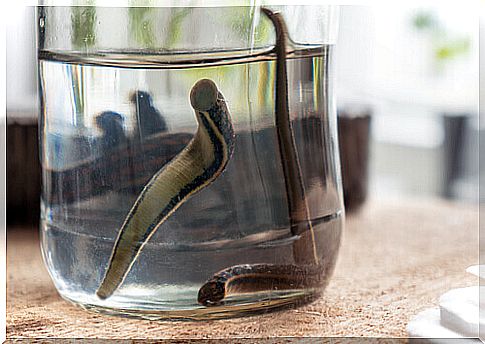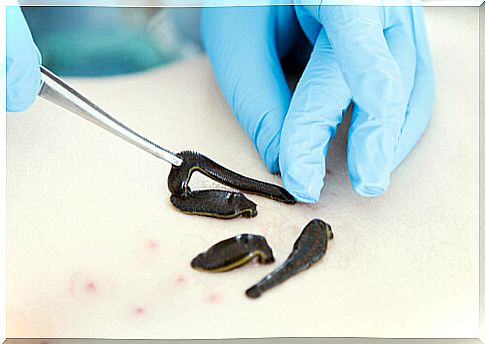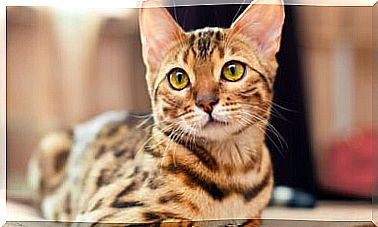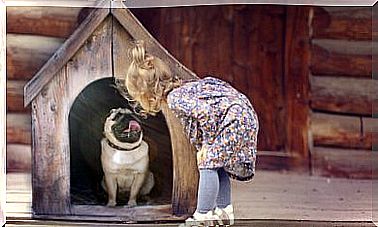Hirudo Medicinalis: The Medicinal Leech

Hirudo medicinalis is a leech, an invertebrate, specifically an annelid belonging to the Hirudinidae family . This species of leech has been widely used in medicine throughout history.
Background
Records mentioning the therapeutic use of leeches date back to the ancient civilizations of Egypt, Greece, Rome, and Mesopotamia. During the Middle Ages, leeches were also applied in different treatments.
This was due to the belief that the body was made up of four humors: blood, phlegm, yellow bile, and black bile. The alteration of the balance between humors caused different pathologies.
The evacuation of the most important humor, the contaminated blood, was essential to restore balance. And, for this, bloodletting was performed or leech therapy was applied.
Hirudo medicinalis anatomy
Hirudo medicinalis is a segmented hermaphroditic worm belonging to the group of annelids and the family Hirudinidae . It is this species, of the more than 600 existing, the most valued in the field of medicine.
The length it can reach is 12 centimeters when it has been fed. If they have not fed, their size is one third of the saying. This animal is characterized by having two suction cups with suction capacity.
The two suction cups are placed in different positions: a small and mobile oral suction cup with three jaws, through which it sucks blood. Each jaw has approximately 60 to 100 teeth, which give the denture a ‘Y’ shape.
On the other hand, the remaining suction cup called the anal suction cup, is the one that it uses to adhere at first and to crawl.
Components of Hirudo medicinalis saliva
The salivary glands of Hirudo medicinalis secrete a series of components that have different therapeutic properties. Among them, the following components can be briefly mentioned:
- Anticoagulants Mainly, the star substance is hirudin, which inhibits the clotting action of thrombin.
- Vasodilators. Different substances similar to histamine, among others, facilitate blood flow by causing dilation of the arteries.
- Anesthetics The bite is painless due to the anesthetic substances inoculated by the leech.
- Anti-inflammatories.
- Antimicrobials.
- Proteolytic enzymes.

How to use Hirudo medicinalis
Leech therapy is called hirudotherapy. Leeches are kept in glass jars, closed by a damp compress in a cool place; they cannot be hermetically sealed.
To manipulate the leeches, dissecting forceps are used and grasped with a glass beaker. Thus, their displacement is avoided and that they are caught in the optimal place. The skin must be clean and, if the worm does not bite easily, impregnate it with sugar water.
After collecting the leeches, which are released once they are overflowing with blood, abundant serosity flows from the incision for hours. Therefore, a non-compressive cotton bandage is applied, and it is removed and replaced with a new one the next day to observe the evolution.
After a few days, the edematous area shows a considerable improvement. In the event that although the leech is full, it does not come loose, it is advisable to apply salt water. Thus, its release is facilitated and infections are avoided by avoiding tearing it to remove it.
Leeches are for single use only. Once used, they must be closed and incinerated. No cases of bite infection have been recorded.

Pathologies to which hirudotherapy has been applied
Among the pathologies to which this technique with leeches have been applied, the following stand out:
- Joint inflammatory processes.
- Reconstructive plastic surgery.
- Migraine.
- Thrombosed hemorrhoids.
- Topical chronic eczema.
An anecdote related to the pilgrims who walked the Camino de Santiago centuries ago is that they used to rest near ponds and rivers. There they refreshed themselves and got rid of the fatigue of the road. And they had some unexpected allies. Leeches relieved edema and prevented the development of thromboembolic disease.
Advantages and contraindications of hirudotherapy
Hirudotherapy does not cause side effects or negative consequences. In addition, it is safe and completely painless. On the other hand, it should be mentioned that there are a number of contraindications.
Among the contraindications, its use in immunosuppressed patients or patients with arterial insufficiency is not accepted. Also, be informed of the possible risk of infection by Aeromonas hydrophila.
This bacterium has a symbiotic relationship with H. medicinalis – it lives in your intestine – and, in turn, secretes enzymes that facilitate the digestion of the blood.
First of all, hirudotherapy is only used in those cases where absolutely no other solution has been found. And the patient must always be informed and his consent obtained. Finally, it is necessary to point out that its use is only in-hospital.









